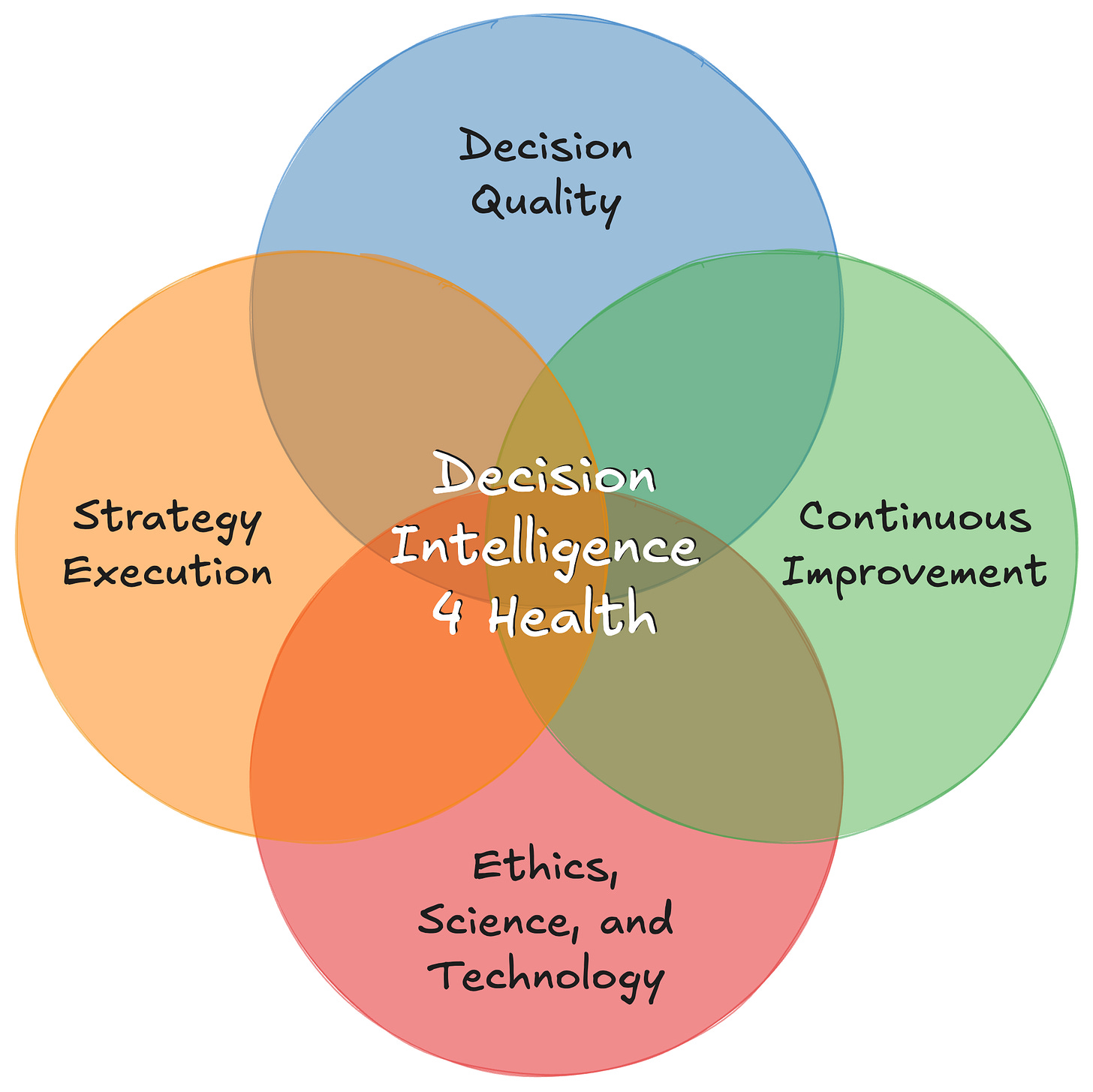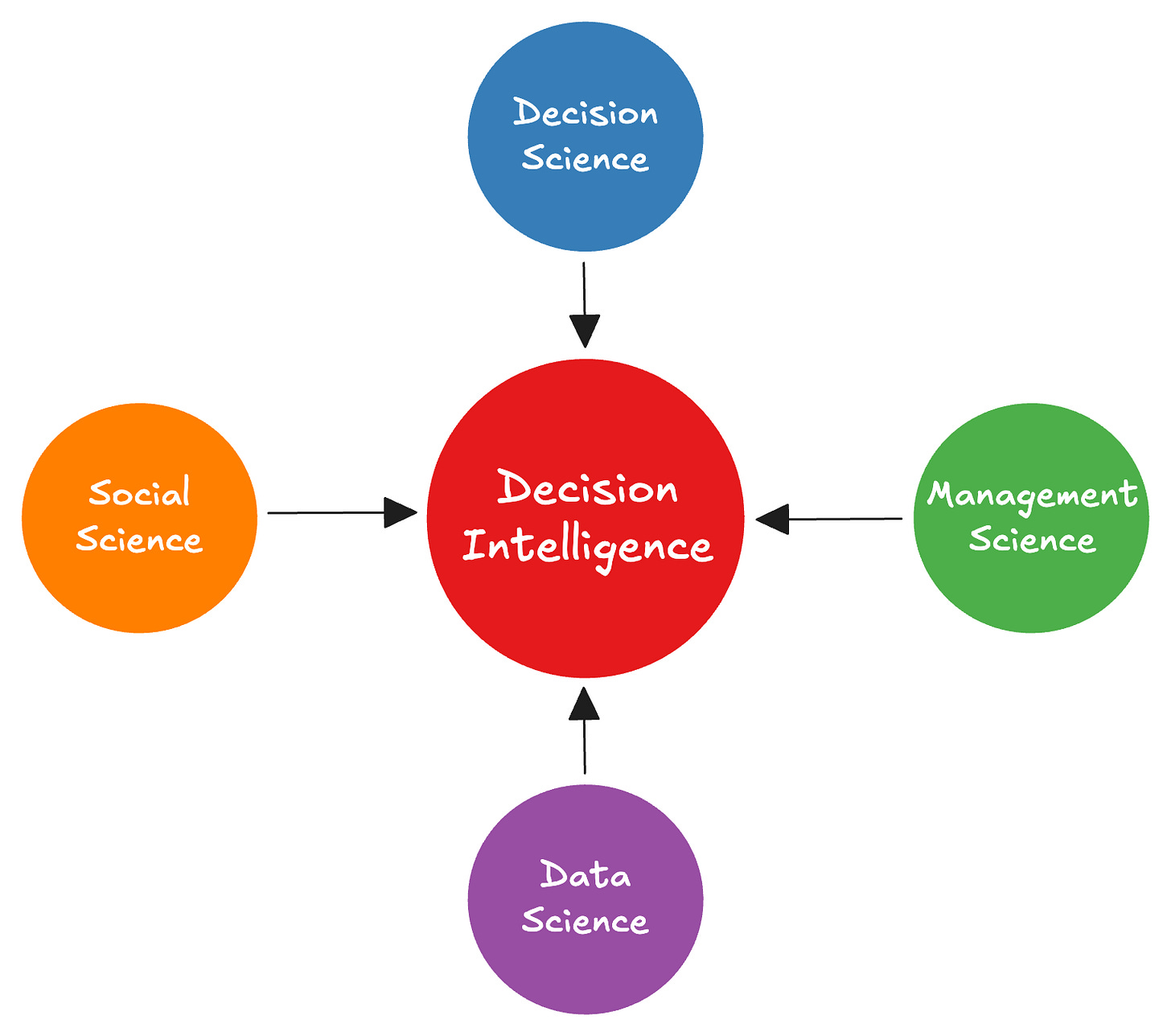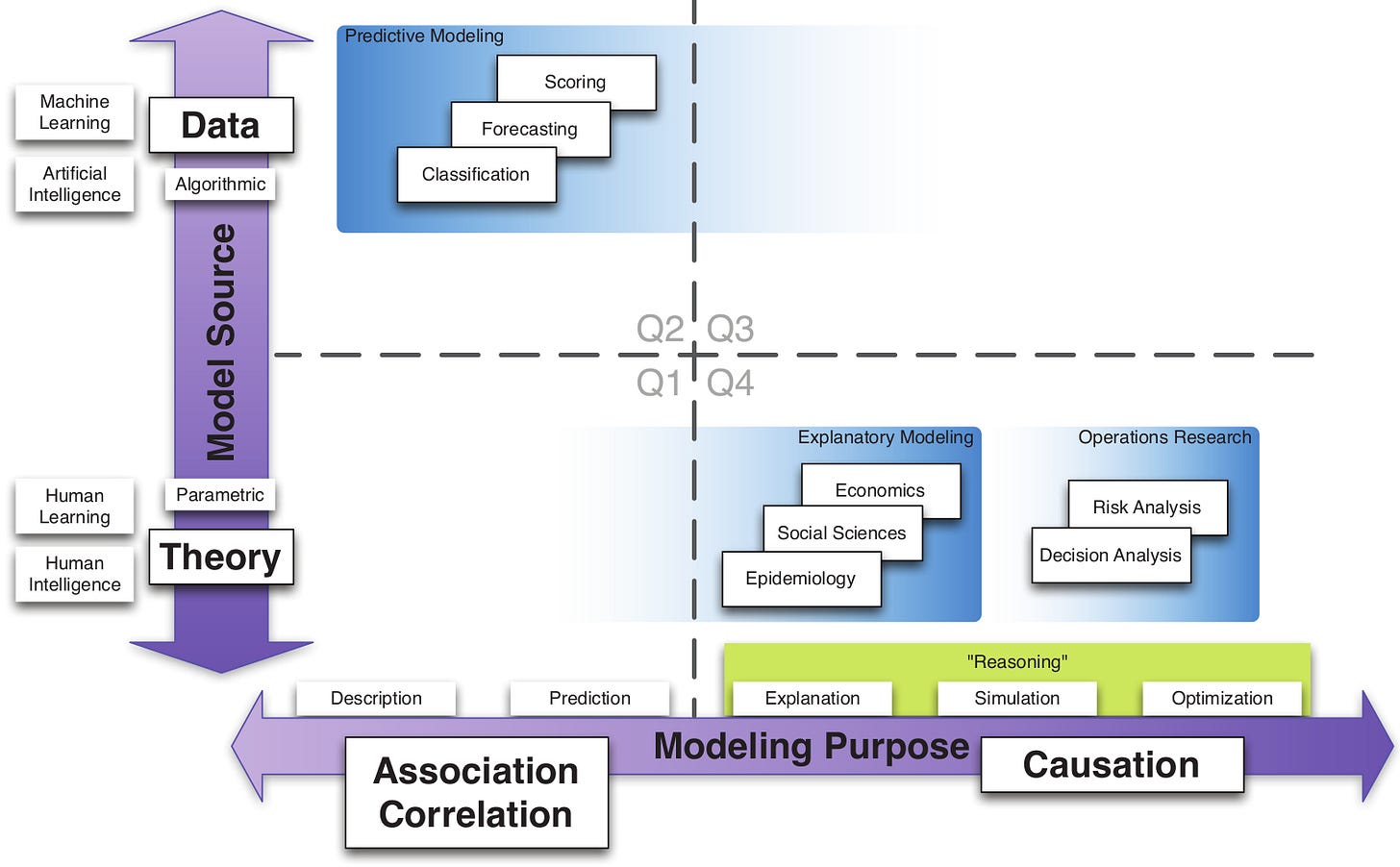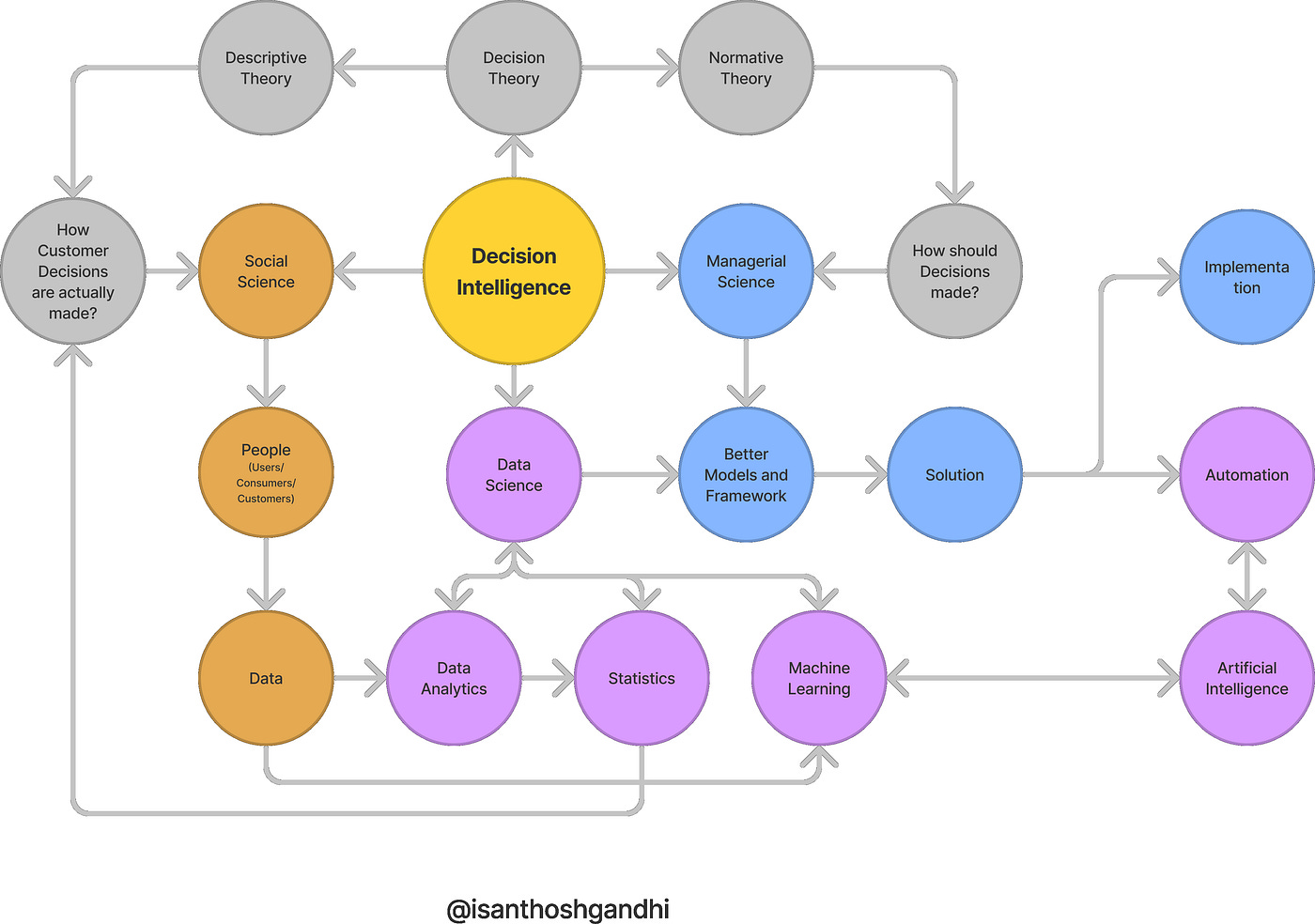Decision Intelligence 4 Health
Also see TEAM Public Health on being decisive.
On this page we cover:
Decisions
Decision intelligence
Decision Intelligence 4 Health
Population health data science
1 Decisions
Decisions are our most important daily activity. Decisions are the irrevocable allocation of resources (time, activity, material, money, people) towards a goal. Some resources, like time, are irreversible!
“… there are only two things that determine how your life turns out: luck and the quality of your decisions. You have control over only one of those two things.”
“… your decision-making is the single most important thing you have control over that will help you achieve your goals.”
Annie Duke, How to Decide: Simple Tools for Making Better Choices. Penguin Publishing Group, 2020.
In spite of its importance, decision quality is rarely formally taught. This is a shame! Some reasons include the complex, multidisciplinary nature of descriptive and normative decision theories. For example, every decision involves
choices, causality, and prediction,
outcomes, trade-offs, and opportunity costs,
memory and sensory inputs,
core beliefs and cognitive biases, and
emotions, reasoning, and actions.
Every decision is influenced by one or more of the following:
values or goals,
drives or impulses,
stresses or pressures,
faulty reasoning (eg, from VUCA), and
learning or improvement opportunities.
Studying decisions holistically will pay off many times over in improving your life (personal, family, community, teams, and organizations) and your work. You will learn a ton and be able to apply the concepts daily! Studying decision quality is transformational and ensuring decision quality in team decisions is the basis for decisive leadership!
Studying decision quality is transformational and ensuring decision quality in team decisions is the basis for decisive leadership!
2 Decision intelligence
Formally, “decision intelligence is an engineering discipline that augments data science with theory from social science, decision theory, and management science”1 (Figure 1).
3 Decision Intelligence 4 Health (DI4H)
For health and human services organizations, nothing is more important than their values, ethics, goals, and strategic decisions. For leaders, “your decision-making is the single most important thing you have control over that will help you achieve your goals.” Organizational decisions determine strategic priorities, resource allocation, alignment, and impacts.
Leaders and teams for health and human services organizations are confronted with four DEEP decision challenges:
Decision making under uncertainty (including deep uncertainty)
Ethical decision making (moral trade-offs, including personal decisions)
Emergency and crisis decision making (high stakes with time constraints)
Priority setting and resource allocation (budgetary/investment trade-offs)
To address the DEEP challenges, I emphasize the human-centered and scientific dimensions of decision intelligence applied to public health and human services organizations (Figure 2).

Decision Intelligence 4 Health (DI4H) is using ethics, science, and technology to improve individual and team strategic decisions in the face of uncertainty, trade-offs, and time constraints. I prioritize improving practical human decision-making capabilities. In addition to decision quality and performance improvement, Figure 2 reminds us to remember public health ethics, science (including neuroscience, cognitive psychology, behavioral science, health economics, and implementation science, computer science, and data science), and technology (computers, machine learning, and artificial intelligence).
Decision Intelligence 4 Health (DI4H) is using ethics, science, and technology to improve strategic decisions in the face of uncertainty, time constraints, and trade-offs.
The purpose of this page is to highlight the analytical, computational, and population health data science components of decision intelligence for public health (see below).
Read TEAM Public Health postings on decision intelligence.
Data science (below) should be in service of decision intelligence (above).
4 Population Health Data science (PHDS)
For 15 years, I taught “Applied Epidemiology Using R” (2004-2019) at UC Berkeley School of Public Health. During that time I witnessed the emergence of “data science.” Data science is the multidisciplinary field of extracting insights and actionable knowledge from structured and unstructured data. This is actually backwards: values, goals, and decisions should drive data science.
In contrast, population health data science (PHDS) is the art and science of transforming data into information and actionable knowledge that informs, influences or optimizes *decisions* to protect and improve health and well-being.
Population health data science is the art and science of transforming data into information and actionable knowledge that informs, influences or optimizes *decisions* to protect and improve health and well-being of communities.
On this page I will also post selected resources for population health data science (Figure 3 and Table) applied to decision intelligence for public health.2
PHDS has five levels. Most organizations (including health organizations) are at Level 1 (description) and, sometimes, Level 2 (prediction). Level 3 (explanation) is implementing modern causal inference methods. Level 4 (simulation) is mathematical modeling for epidemiological or decision insights (eg, CDPH CalCAT). Level 5 (optimization) is seeking to optimize decision, effectiveness, or efficiency metrics. Familiar examples include decision analysis, cost-effectiveness analysis, and cost-benefit analysis. Less familiar to public health are methods from management science (aka, operations research), Bayesian networks, machine learning, and artificial intelligence. Decision intelligence operates on PHDS Level 5 and builds on concepts and methods from all levels.
Decision intelligence operates on PHDS Level 5 and builds on concepts and methods from all levels.
Resources
Resources for human decision intelligence
Alliance for Decision Education (foundation)
Decision Education Foundation (foundation)
University of Texas at Austin Strategic Decision and Risk Management (executive education)
Harvard Center for Health Decision Science (academic)
RAND Corporation
Carnegie Mellon University AI Institute for Societal Decision Making (academic)
Resources for population health data science
R language
R packages for decision intelligence
markovchain
msm
bnlearn (Bayesian networks)
Julia language
Julia packages for decision intelligence
DecisionProgramming.jl (decision analysis with influence diagrams)
Bayesian networks
Markov Decision Processes
Decision making software
The programming languages above can be use for decision making. For example, in this tutorial paper, “Population health thinking with Bayesian networks,” I demonstrate how to use R to conduct decision analysis. However, it is easier to use dedicated software. Here are some popular software solutions:
Appendix
Detailed view of Figure 1.
Footnotes
In 2019, I started learning Python to complement R. When the COVID-19 pandemic struck, I stopped all teaching and coding. When I returned to coding, I discovered the Julia language! Julia is now my “go-to” language for scientific computing.





